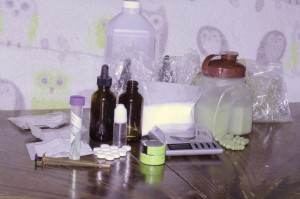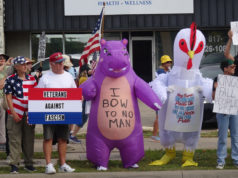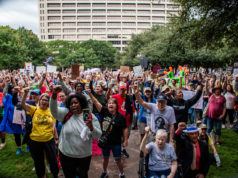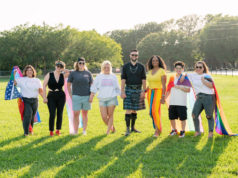
Benzodiazepines were originally synthesized by scientists at Hoffman-La Roche, who were looking for an alternative to a class of drugs known as barbiturates, most recently popularized as the go-to medication in The Wolf of Wall Street. Leonardo DiCaprio’s character took so many of them, he had to roll himself out to his car. By the mid 1950s, barbs were the go-to medication for the average Joe or Jane suffering from stress and anxiety, but information was quickly accumulating on their wildly dangerous side effects –– particularly overdose deaths and fetal problems when used by pregnant women — along with crippling dependency issues. By the early 1960s, the pharmaceutical market was wide open for new drugs to take the place of barbiturates.
That magic pill was Valium. The first benzodiazepine grew to become the best-selling medication in the world between 1968 and 1982 — in 1978, diazepam was the active ingredient in more than 2 billion pills sold worldwide. Valium’s star didn’t really dim until Xanax debuted in the U.S. market in 1981. Analysts had projected that Xanax’s manufacturer, Upjohn (later absorbed by Pfizer), would see a $20 to $30 million increase in annual sales. By 1985, Xanax had exceeded $200 million.
What made the drug so appealing was its fast onset, particularly with regard to panic attacks. It also was, in the opinion of a lot of experts, a more addicting medication than Valium. As are the new –– and legal –– synthetic versions of it.
Hinson may not have any firsthand experience with benzodiazepine analogs, but she does know a great deal about synthetic drugs laws –– the two subjects happen to be quite intertwined. It’s simply not possible, with their popularity rapidly spreading, that benzo analogs will remain immune to the law for much longer.
“When the Analogue Act was passed in 1986,” she began, “legislators were targeting drugs that were being mimicked most popularly at the time. I doubt that there was even a thought that the synthetic drugs that we see today would be compounded in the way that they are.”
The most popular synthetics or analogs, she said, are “not really an analog of any scheduled drug.”
In 2012, the federal government tried to fix its inability to address new drugs by passing the Synthetic Drug Abuse Prevention Act. Now the Drug Enforcement could modify the Controlled Substances Act so that if a new drug came online that didn’t resemble either a Schedule 1 or 2 drug, the DEA could ask for corrective legislation immediately. No one needed to worry about debating the definition of “analog” in the courtroom.
The Synthetic Act was good on paper but not in reality. The process of classifying a new drug as a controlled substance was a lengthy one, and as soon as a drug became controlled, a new one would immediately take its place.
To speed things up, in 2014, the DEA was given the ability to “update” the Synthetic Act.
“Any new compounds they found,” Hinson said, “they could go ahead and quarantine those and make them illegal.”
Usually, the ban is only “temporary,” to provide the adequate time to pass new legislation and make the substance permanently illegal. A substance doesn’t usually undergo review and then get released back into the realms of legality.
This happened with MDMA — the compound known as “ecstasy” before “ecstasy” and “molly” became words for just anything that caused euphoria — in 1985, during the height of the Dallas club scene that MDMA had essentially created. The drug was given a year-long ban, during which the DEA claimed it would be “tested” and “reviewed.” The review was inadequate at best. While MDMA was being researched on people with treatment-resistant Post Traumatic Stress Disorder, severe depression, and several other illnesses, none of that was taken into account by the DEA during its review. The DEA’s only goal was to get the drug placed on Schedule 1 as quickly as possible — which, of course, prohibited research into its medical benefits.
Due to a careless emergency ban, MDMA has spent a lot of time as a Schedule 1 substance when it could have been helping millions of people. The emergency bans, Hinson said, don’t work in 2015.
“There’s something new on the market literally every month,” she said, and the increased access to information today is largely responsible for the quick turnaround of new drugs filling in for the banned ones.
“It doesn’t take a rocket scientist to be able to create synthetic drugs,” she said. “You can go out there, get a recipe, order it online, and make it.”
A major drawback to emergency bans is that as soon as an analog drug is placed under an emergency ban, it is immediately classified as a Schedule 1 substance, which makes it impossible for scientists to research anything about it. Once a compound lands on that dark side of the moon, the best knowledge of its dangers comes from anecdotal reports found on internet forums. Of course, each time an emergency ban is placed on a compound we know very little about, a new compound is synthesized that we know even less about.
“From the time that I first learned about synthetics, in 2010, in the last five years, the effects have been much more intensified,” Hinson said. “There is a higher unknown than there used to be. It is more dangerous on first-time use than we used to see it. One of the first places where synthetic drug use was reported was the Poison Control Center. … We see that happening more and more and to a greater degree than it’s happened before.”
The limited research on MDMA, sponsored by the Multidisciplinary Association for Psychedelic Substances, has recently entered phase III trials. There is a chance it could be legalized as a prescriptive medicine by 2021. Its value to people suffering from PTSD appears almost magical: 80 percent of the veterans in the study no longer suffer from the disorder.
But using an emergency ban that restricted research means that at the earliest, it will be 36 years since that ban before the medicine becomes available to the millions who may benefit from it. And the emergency ban did nothing to stop people from manufacturing a wide variety of compounds, some quite dangerous, that were and continue to be sold under the name “ecstasy.”
******
After trying three analog benzos, and I suppose the same number of the branded ones, I can’t say the analogs are more dangerous than the others. They’re all synthetic, after all, and while Valium is, and will probably always be, the daylong muscle-relaxing, hardly addicting King of Benzos, Klonopin and Xanax can fuck off. If I had to choose, I’d pick any of the shady Chinese-made benzos over those meds any day. Klonopin is unrecognizable until after beer 3, seven hours after you’ve taken the drug, when you suddenly have to remember why you walked seven blocks from the bar and how to get back. Xanax should be renamed Disaster. If not being used for sleep, it’s a roll of the dice each time (and the dice are rigged, of course).
For an idea of how benzo analogs should not be handled, we can take a look at how the legislation continuously banning new versions of synthetic marijuana has fared. Did banning that drug class at all, in the first place, do any good?
A former nurse recently told me about his experiences with synthetic cannabinoids both before and after the ban.
“When K2 was made with JWH-18, it was just that,” said the nurse, who asked to go by the name Decker. “There was a good deal of research done on that. But we don’t know what is on the shit nowadays. You walk into a head shop, you buy this baggie, and you have no idea what the chemical is that you’re smoking.”
I asked Decker what the compounds were like to smoke after the initial K2 ban. He said his first experience was oddly hallucinogenic but that later uses produced effects that were entirely unfamiliar to a typical marijuana smoker.
“One night my cousin and I were smoking something called Diablo,” Decker said. “My cousin wound up having a severe panic attack. He was hallucinating. He believed he was speaking to an angel, and he kept saying, ‘I’m not ready to go yet.’ He was clearly freaking out.
“That lasted about two hours,” Decker continued. “After that I realized that I couldn’t do that shit anymore. You just don’t know what you’re getting.”
That’s the nature of banning drugs: The drugs take to bans like gremlins in swimming pools. The first modern example of the government stepping into the realm of drug use was when the League of Nations oversaw a treaty that had countries agree to be a bit more careful with their morphine and opium shipments –– they had a tendency to steer off course, by a great deal, and come back with less cargo.
The next time, that treaty was ratified to ban heroin, after Bayer’s attempt at a safer version of morphine was successful in all the wrong ways. Incidentally, the first drug analogs appeared with the country’s first ban, and the treaty tried and failed to keep up with their creations.
A second treaty was signed in 1931, requiring countries to ban 12 substances.
The next, overseen by the UN, banned 119 substances in 1961. It also adopted a 1-4 list of controlled substances. The next UN convention, in ’71, banned 116 drugs, because hallucinogens like LSD-25 and 2,5-Dimethoxy-4-ethylamphetamine were getting too popular.
The point: Banning drugs has never worked, and it won’t work for benzo analogs, either. The ones available were created in labs, by actual scientists. Nobody wants to see an alternative to that.
But you can bet that some legislators are trying to come up with a way to make the knock-offs illegal. As dangerous as they’ll potentially be when they inevitably hit the mainstream, they’ll look harmless when compared to their replacements, which will arrive the very moment the old ones are banned.
Maybe we should have just left morphine and opium alone. Cracking down on them didn’t really do much good.











